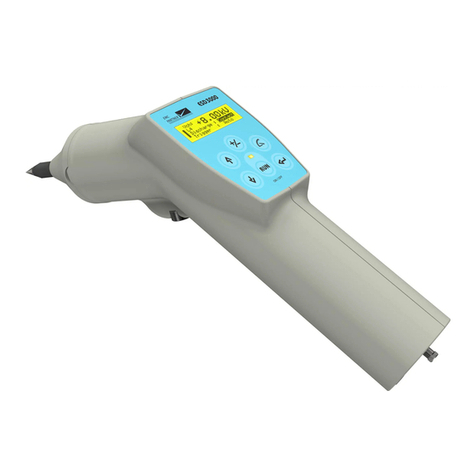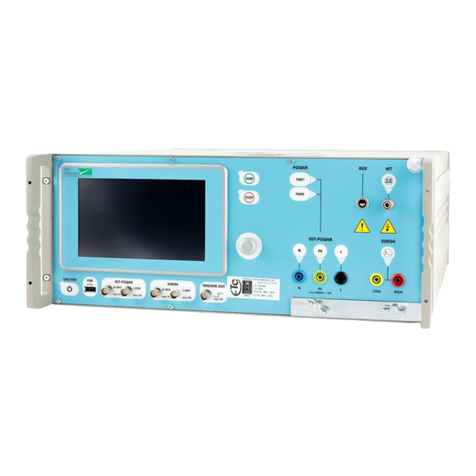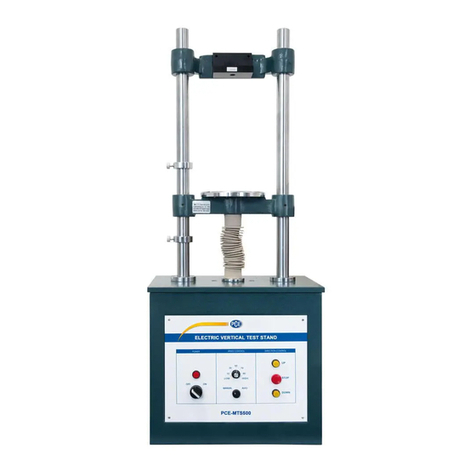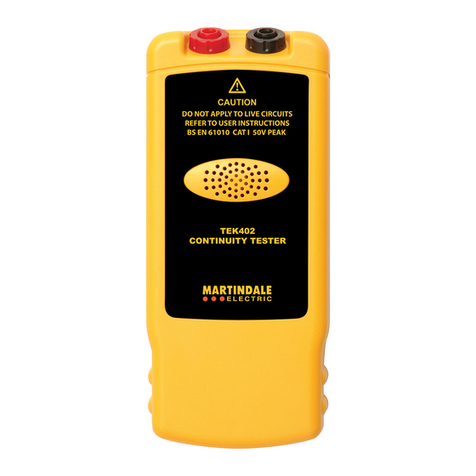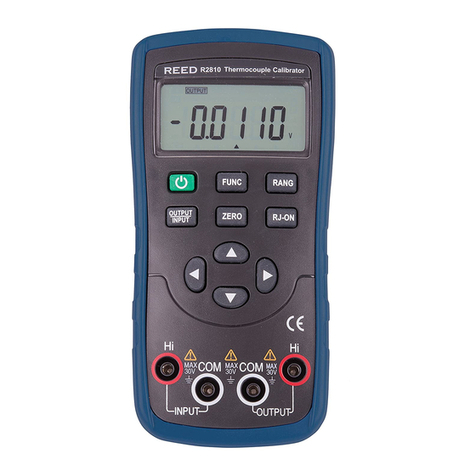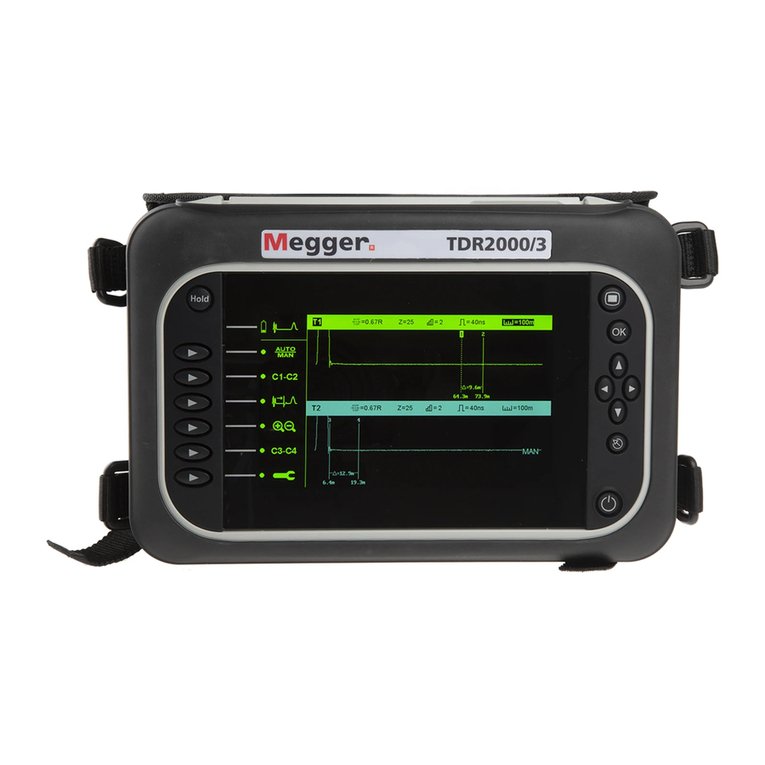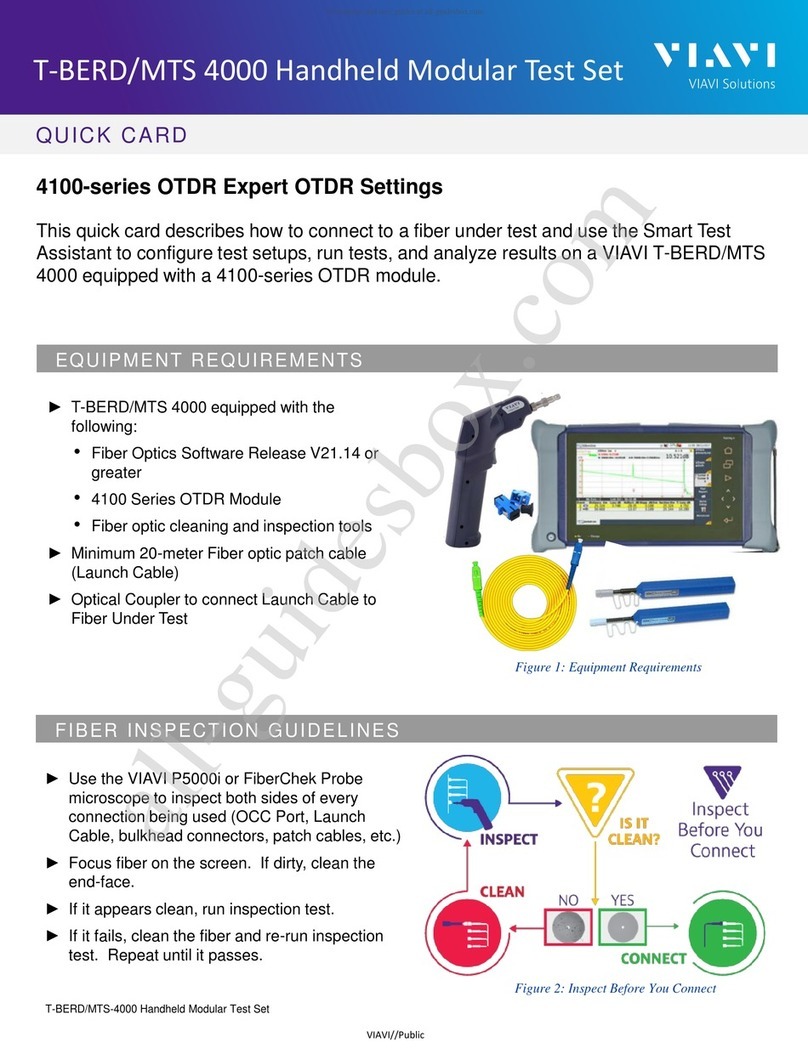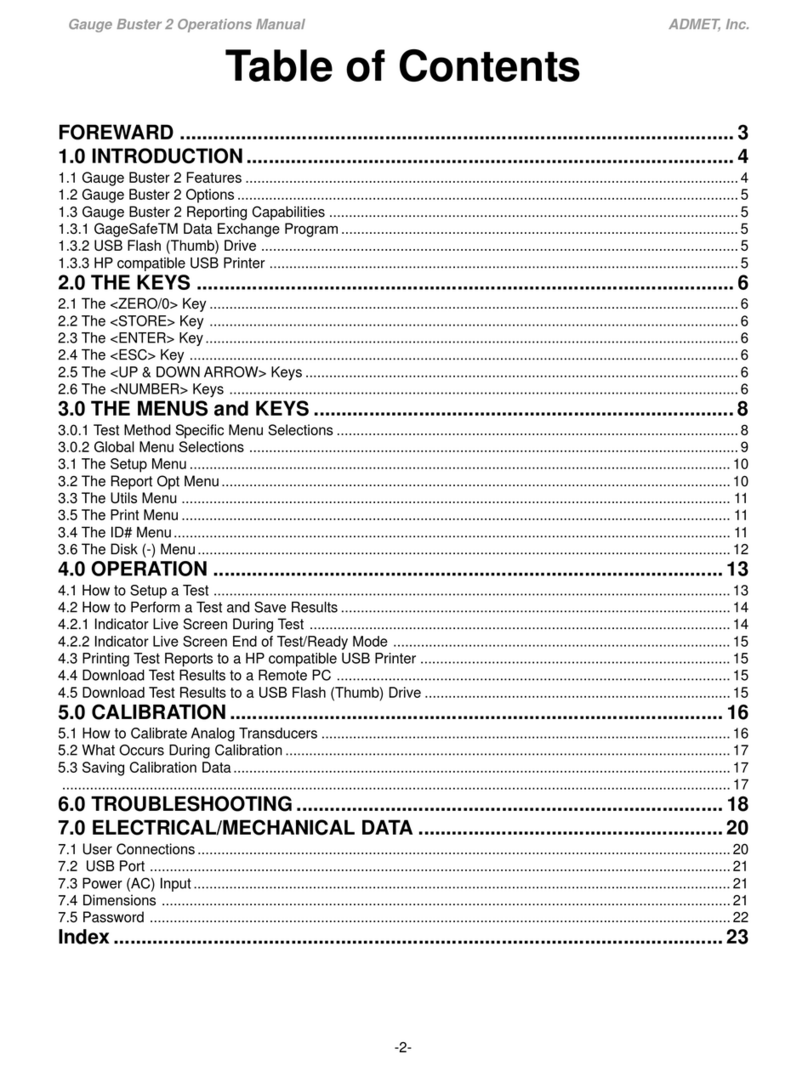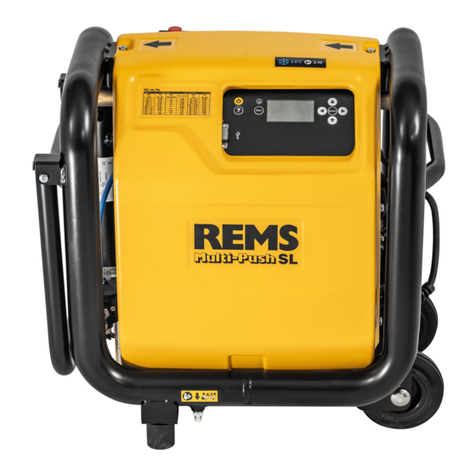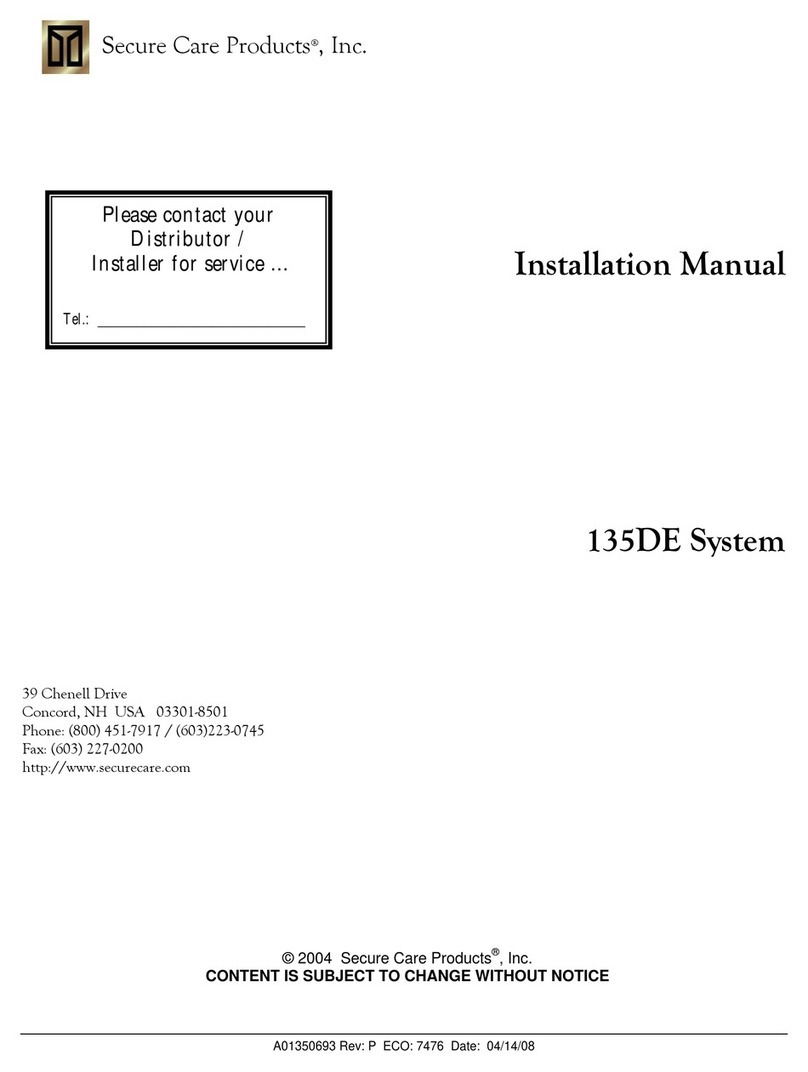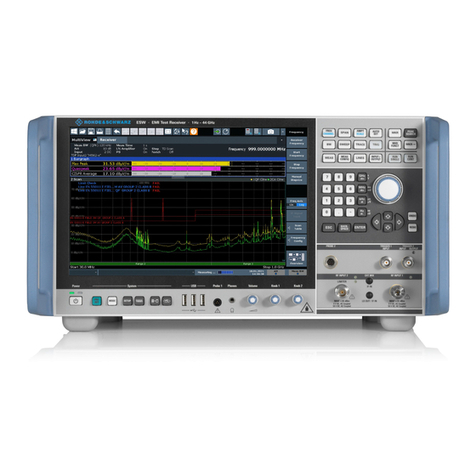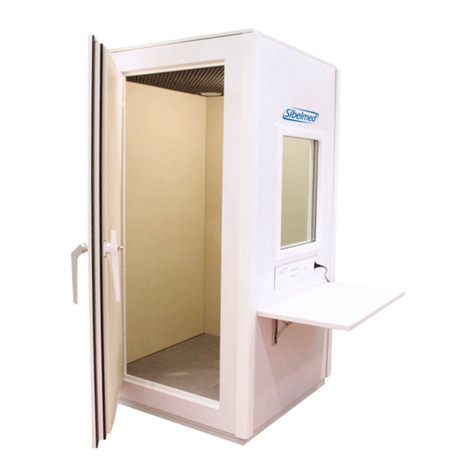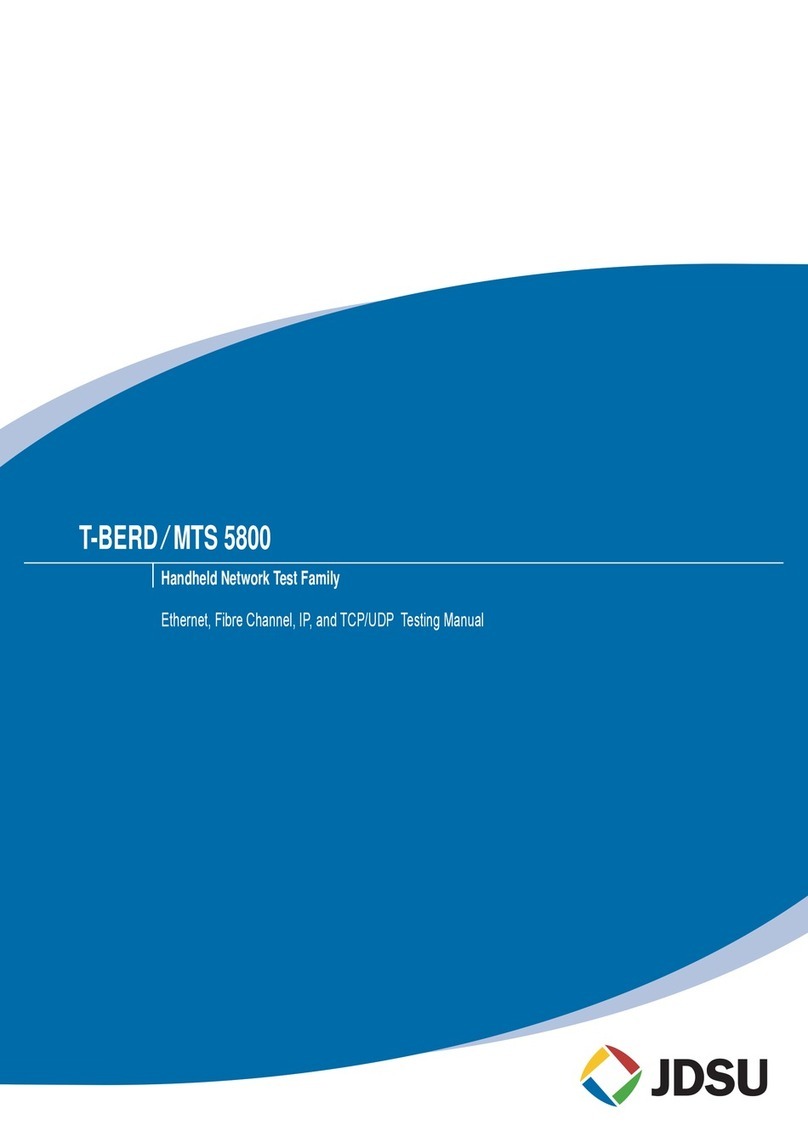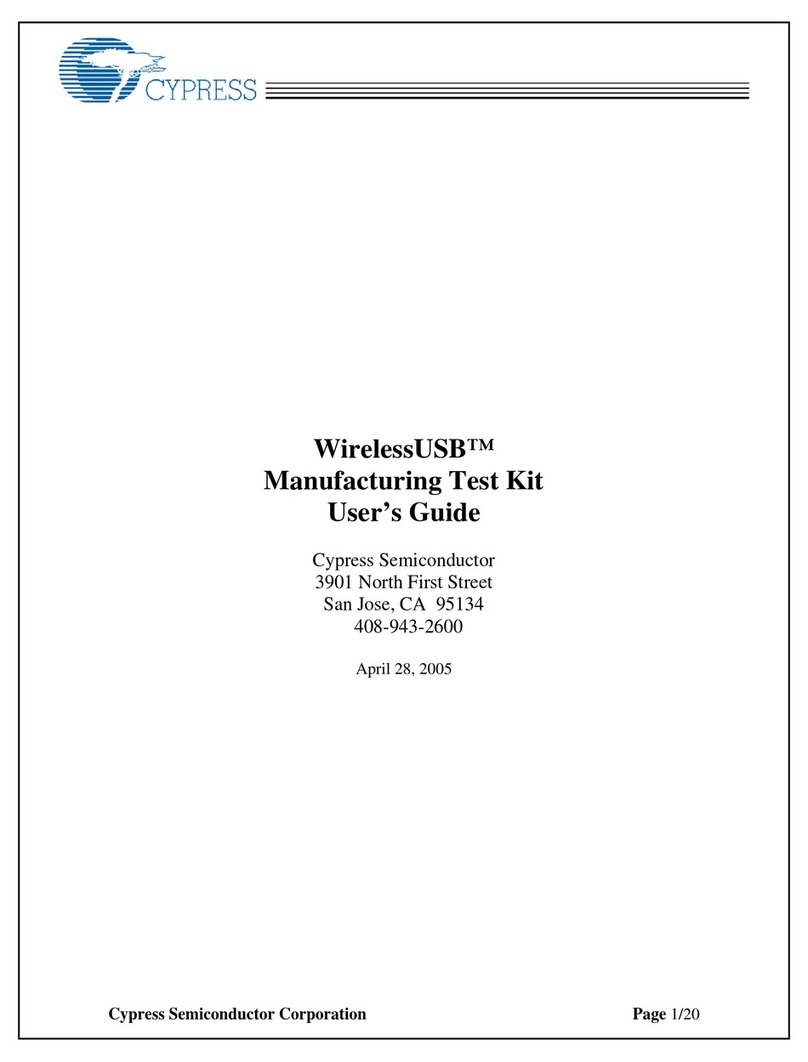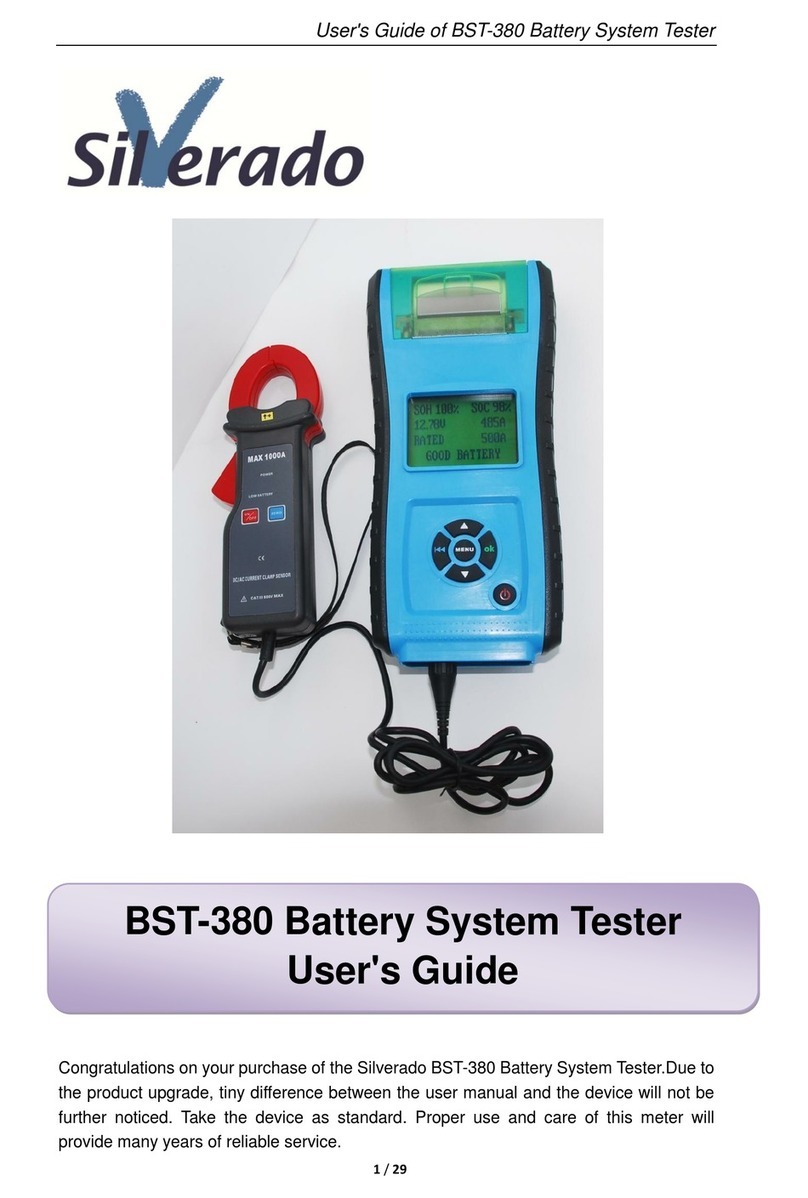EMC-PARTNER CDN2000-06-25 User manual

E-CDN2000-06-25-E-Manual 1/54
User Manual CDN2000-06-25
Coupling Network for:
Surge: 1.2/50µs up to 6 kV and 8/20 current up to 3 kA
Ring Wave: up to 6 kV
EFT: up to 4.4 kV, common and differential mode
Damped Oscillatory Wave: up to 3kV
Title: CDN2000-06-25 Coupling Network
Date: 16.07.99
Division Manager: M. Lutz
Quality Manager: R. Henz
Revised 06. May 2011
Three Phase Coupling Decoupling Network - Manually Operated
For EFT, SURGE, RING WAVE, OSCI Coupling
Filter and
overcurrent trip
Supply input
Supply output
Switch field coupling
impedance and path
Ls ON/OFF

CDN2000-06-25 coupling decoupling network
2/54
1DESCRIPTION 5
1.1 The different application of the CDN2000-06-25 5
1.1.1 "CWG Combination Wave Generator" 5
1.1.2 Ring wave test 0,5 µs / 100 kHz 7
1.1.3 Electric fast transient 5/50 ns 10
1.1.4 Damped Oscillatory Wave 100 kHz or 1 MHz 10
1.2 Impulse testers useably with CDN2000-06-25 12
1.2.1 MIG testers with 6 kV output voltage 12
1.2.2 Impulse testers TRA 12
1.3 Technical data 13
1.3.1 CDN2000-06-25 13
1.3.2 Block diagram CDN2000 15
1.4 Mechanical dimensions 16
1.4.1 CDN2000-06-25 Tester 16
1.5 Power supply 16
1.6 Accessories delivered with the CDN2000-06-25 17
2SAFETY 19
2.1 Safety standards 19
2.2 Climatic Conditions 19
2.3 Precautionary measure during use 20
2.4 Electromagnetic Compatibility 20
2.5 The manual is an integral part of the equipment. Refer to the manual. 20
3MECHANICAL STRUCTURE 21
3.1 General 21
4PANELS OF THE CDN2000-06-25 23
4.1 Front panel of the CDN2000-06-25 23
5PREPARATION FOR OPERATION 25
5.1 Attention, Refer to Manual 25
5.2 Operators and Service Personnel 25
5.3 Checks before operation 25
5.3.1 Optical verification of the CDN2000-06-25 25
5.3.2 EUT Power, Power source for the EUT 26

CDN2000-06-25 coupling decoupling network
3/54
5.3.3 I/O lines coupling 26
5.3.4 SURGE coupling set up 27
5.3.5 Ring Wave coupling set up 27
5.3.6 EFT coupling set up 28
5.3.7 Damped oscillatory coupling set up 29
6TESTING WITH THE CDN2000-06-25 31
6.1 Quickstart of TRA or MIG together with CDN2000-06-25 31
6.1.1 MIG0603Inx Operation with CDN2000-06-25 31
7MAINTENANCE AND SERVICING 33
7.1 Maintenance 33
7.2 Verification of the CDN2000-06-25 by the user 33
7.2.1 Combination Wave Tester 33
7.2.2 Ring Wave Tester 34
7.3 Verification of the CDN2000-06-25 at EMC PARTNER 34
8WHAT MUST BE DONE FOLLOWING FAILED OPERATION 35
8.1 Service; Repairs 35
8.2 Spare parts list 35
8.3 Hints when varistors have been damaged in a CDN 35
8.4 Service department of EMC PARTNER AG 37
8.5 Information for dismantling 37
8.6 Parts which can be recycled 37
8.7 Parts which can not be recycled 37
9RECYCLING / DISPOSAL 39
9.1 RoHS directive 2002/95/EG 39
9.2 WEEE directive 2002/96/EG 39
9.3 Information for dismantling 39
9.4 Parts which can be recycled 39
9.5 Parts which can not be recycled 39
10 APPENDIX AND CORRECTION 41
10.1 Appendix 41
10.1.1 Verification of the 1,2/50; 8/20 µs waveform 41

CDN2000-06-25 coupling decoupling network
4/54
10.2 Correction 42
10.2.1 TRA2000 with CDN2000 SURGE Synchronisation 42
11 GLOSSARY 43
12 INDEX 45
13 ANNEX 48
13.1 Damped oscillatory on power supply 48
13.2 Damped oscillatory on I/O lines 48
13.3 Assembly Instruction to MC Connectors 49
13.4 Wire connection between MIG0603OMI and CDN2000-06-25 51

E-CDN2000-06-25-E-Manual 5/54
1 Description
The impulse testers MIG0603IN, MIG0603-OS, MIG1203-CWG, TRA1000, etc. can be extended with a
manual operated three-phase coupling network CDN2000. With regard to its price and dimensions, the
three-phase coupling network is a genuine alternative to mains coupling filters available on the market
today. The CDN2000 can be used for SURGE, Ring Wave, EFT, Damped oscillation superimposing. The
desired coupling path must be plugged on the front panel by hand. The coupling network fulfils the
requirements laid down in the IEC61000-4-4, IEC 61000-4-5, IEC 61000-4-12, IEC 61000-4-18 standards.
The most important characteristics of the three-phase coupling network are
Simple, clear selection of coupling path for SURGE for common and differential mode coupling
Simple, clear selection of coupling path for EFT and Damped Oscillatory Waves
Handy coupling network for up to 25 A per phase.
The units can be placed below MIG or TRANSIENT testers.
Contact-protected construction.
All plug connections to power supply and EUT are arranged on the front plate.
1.1 The different application of the CDN2000-06-25
1.1.1 "CWG Combination Wave Generator"
The combination wave generator has been defined first for Electro Magnetic Compatibility EMC tests up to 4
kV in the document IEC 61000-4-5 or IEEE 587. EMC test must be carried out on powered equipment.
There are several reasons for performing powered test:
From a standpoint of a good practice, it is best to perform laboratory tests in a manner that most closely
simulates the actual service environment.
It is the applied ac that furnishes the energy following the surge, that can establish sustained arcing
faults, tracking on insulation, destruction of printed wiring, and so on
The application of normal ac power generally rises the EUT to an initial level of stress. Without power
current following a surge-induced flashover, the resulting defect might not be detected.
The CWG tester generate a waveform 1,2/50 µs or a current waveform of 8/20 µs at clamping status of the
protection circuit. Traditionally, the 1,2/50 µs voltage waveform was used for testing the basic impulse level
of insulation, which is approximately an open circuit until the insulation fails. The 8/20 µs current waveform
was used to inject large currents into surge protective devices. Since both the open circuit voltage and short
circuit current are different aspects of the same phenomenon, such as an overstress caused by lightning, it
was necessary to combine them to a single waveform when the load is not known in advance.

CDN2000-06-25 coupling decoupling network
6/54
Generators to carry out combination wave tests
Figure: 1.0.3-1
Legend:
RL
Charging resistor
Cs
Impulse capacitor
S
High voltage switch
RE1
Discharge resistor
Ls
Inductance of the generator
Rs
Serial resistor
RM
Shunt
RE2
Discharge resistor
TM1
Divider
Lv
Inductance of the connection
MS
Measurement equipment
TM2
Divider
A dc source charges the capacitors within the different modules via the charging resistors. Closing the
switch S discharge the capacitors into the parallel branches RE1, RE2 and EUT. When the EUT has a high
impedance the CWG generates a voltage rise defined by the serial inductance Ls and by the parallel
resistor RE2. The half value time is determined by Cs and the both RE1 // RE2. When the EUT has a low
impedance the generated current is determined by the elements Cs, Ls, Rs and the EUT.
The current and voltage waveforms are defined in IEC 61000-4-5 as follows:
Waveshapes and tolerances
Current into short circuit
Voltage at no load
Figure: 1.0.1-2
The waveforms are verified in open circuit (voc) and short circuit (isc). No load limitation exists, because for
different load impedance (EUT) the waveforms are within the open circuit voltage waveform and the short
circuit current waveform.
Rise time:
Ts=8 µs ± 20%
Half value time:
Tr = 20 µs ± 20%
Under swing:
ü < 30 %
90%
50%
10%
100%
Test generator CWG
I
[A]
EUT, e.g. Motors
U
[V]
100%
50%
20 µs
8 µs
Ü<30%
50 µs
1,2 µs
Rise time:
Ts=1,2 µs ± 30%
Half value time:
Tr = 50 µs ± 20%
Over swing:
ü < 5 %
90%
S

CDN2000-06-25 coupling decoupling network
7/54
Superimposing surge onto power supply
To superimpose the surge pulses onto power line supply, coupling filters must be used. The aim of the
coupling filter is to couple the generated surge waveform without deformation of rise time, half value time
and amplitude onto the operated EUT and to protect the auxiliary equipment from surge pulses.
When surges are superimposed onto power supply lines, the synchronisation angle must be chosen to
correspond to the half wave of the power supply. The picture below shows that pseudo tests can be carried
out, when the synchronisation angle is not correctly selected. When a positive surge is superimposed at
270°, the clamping voltage of the varistor is not reached and no real test is carried out.
Figure: 1.0.1-3
1.1.2 Ring wave test 0,5 µs / 100 kHz
Introduction:
The ring wave is a typical oscillatory transient, induced in low voltage cables due to the switching of
electrical networks and reactive loads, faults and insulation breakdown of power supply circuits or lightning.
The ring wave is representative of a wide range of electromagnetic environments of residential, as well as
industrial, installations; it is suitable for checking the immunity of equipment in respect of the above
mentioned phenomena.
Another cause of the ring wave, lightning, is characterised by a unidirectional waveform (standards 1,2/50;
8/20 µs); the circuits subjected to its indirect effect ( inductive coupling among lines) are mainly influenced
by the derivative of the primary pulse; the coupling mechanism, from its original frequency spectrum, gives
rise to oscillations, the characteristics of which depend on the reactive parameters of the ground circuits, on
metal structures involved in the lightning current flow, in addition to the propagation in the low voltage lines
involved (see figure below).
Protection circuit
Tester
Filter
Coupling
Superposing sure at
different angle

CDN2000-06-25 coupling decoupling network
8/54
i
Primary
Protection
Secondary
Protection
Household
Equipment
e.g. PC
ANSI / IEEE; IEC 61000-4-12
CWG versus Ring wave
Lightning
Figure: 1.0.2-1
The ring wave appears at the terminals of equipment (equipment ports) as a consequence of switching in
power and control lines, as well as a consequence of lightning. The single event type and the decaying
oscillatory waveform are the most significant parameters of this test.
Ring Wave Generator
Figure: 1.0.2-2
Legend:
RL
Charging resistor
Cs
Impulse capacitor
S
High voltage switch
MS
Measuring equipment
Lp
Inductance of the generator
Rs
Serial resistor
RM
Shunt
Lv
Inductance of the connection
R1-3
Current limiting resistors
TM
Dividers
Cp
Parallel capacitor
Test generator
S

CDN2000-06-25 coupling decoupling network
9/54
A dc source charges the impulse capacitor Cs to a programmed voltage. The high voltage switch S links
impulse capacitor to the impulse shaping network. Depending on energy and voltages it can be a
mechanical or an electronic switch. The waveform is mainly influenced by the network of the generator.
Voltage and Current waveform and tolerances
t
t
Figure: 1.0.2-3
Relevant parameters for testing.
Repetition rate
The repetition rate of the transient is directly related to the frequency of occurrence of the primary
phenomenon; it is higher whenever the primary cause is the load switching in control lines, and less frequent
in the case of faults and lightning; the occurrence may range from 1/s to 1/month
Phase angle
Equipment failures related to ring wave on power supply sources can depend on the phase angle of the a.c.
voltage sine wave at which the transients are applied. When a protection element sparks over during a ring
wave test, power-follow might occur. Power-follow is the current from the connected power source that flows
through a protective element, or from any sparkover in the EUT, during and following the passage of test
discharge current.
For semiconductors, the phenomenon appears related to conduction state of the EUT semiconductor
devices at the time the ring wave occurs. Semiconductors parameters that might be involved include
forward and reverse recovery characteristics and secondary breakdown performance.
The device most likely to fail in a phase-related way are semiconductors involved in the power input
circuitry. Other devices, in different areas of the EUT, might also exhibit such failure modes in the EUT
power-input circuits, if some or all of the transient pass through them.
Polarity reversal
The sensitivity of semiconductors to the timing and polarity of a transient is one of the reason for selecting
an oscillatory waveform to represent the environment; it will be more likely to provoke undue semiconductor
failures than an unidirectional wave.
The breakdown of semiconductors under various conditions of load and transient overvoltages applications
has been investigated.
The results below are related to the effect of transient polarity reversal on diode e.g. 1N679. The ring wave
has been applied to the diode at the peak of the reverse voltage and the measured average breakdown
voltage resulting being 1'800 V. The application of the ring wave at 30° and 90° after start of conduction has
given a reduction of the average breakdown voltage of about 33% and 50% respectively.
Rise time:
Ts < 1µs
Decaying:
2. Amplitude to 1.
60 to 90 %
Rise time:
Ts=0,5 µs ± 30%
Decaying:
2. Amplitude to 1.
60 to 90 %
A
V
100%
10%
0,5 µs
10 µs ± 20%
10 µs ± 20%
90%

CDN2000-06-25 coupling decoupling network
10/54
The same investigation put in evidence that reverse voltage applied during the conduction period of the
power frequency produces lower breakdown voltage than the application of the transient with no load or
during blocking.
1.1.3 Electric fast transient 5/50 ns
Industrial measurement and control equipment practically always operates in conjunction with conventional
control units (relays, contactors). Fluorescent lamp ballast units, insufficiently suppressed coffee grinders,
vacuum cleaners, drilling machines, hair dryers, universal motors, etc. can be found everywhere in the
power supply system. All these primarily inductive loads produce interference when switched on and off. A
wide range of switching transients, also called bursts, are produced with the following waveform.
Figure: 1.0.3.1
The parameters which define the
burst are:
Rise time of the spike Ts in ns
Repetition frequency f4 in the range of kHz up to MHz
Energy, some mJ
Voltage amplitude UBmax. up to some kV
Duration of a burst several milliseconds
The different EFT sources generate different bursts waveforms. A typical waveform of a burst is shown in
the next figure:
The impedance of the EFT source is generally high, therefore the capacitance of connected cables
influences the rise time.
1.1.4 Damped Oscillatory Wave 100 kHz or 1 MHz
Introduction:
The damped oscillatory wave is a typical oscillatory transient, induced in low voltage supply of measuring
cables due to the switching of three phase electrical networks in HV/N`MV open air station.
In electrical stations, the opening and closing operations of HV isolators give rise to sharp front-wave
transients, with time of the order of some tens of nanoseconds. The voltage front-wave has an evolution that
includes reflection, due to mismatching of the characteristic impedance of HV circuits involved. In this

CDN2000-06-25 coupling decoupling network
11/54
respect, the resulting transient voltage and current in HV busbars are characterised by a fundamental
oscillation frequency that depends on the length of the circuit and on the propagation time.
The oscillation frequency ranges from about 100 kHz to a few megahertz, depending on the influence of the
parameter mentioned above and the length of the busbars, which may vary from some tens of meters to
hundreds of meters. In this respect, the oscillation frequency of 1 MHz may considered respective of most
situations, but 100 kHz has been considered appropriate for large HV substations.
The repetition frequency is variable and a function of the distance between the switching contacts. The
minimum repetition frequency in respect of each phase, is twice the power frequency. The repetition rates
selected, 40/s and 400/s represents therefore a compromise, taking into account the different duration of
the phenomena, the suitability of the different frequencies considered and the problem related to the energy
to which the circuits under test are subjected.
Impedance of the test generator
For testing the input/output ports of measuring relays, the selection of the 200 Ohm impedance is a
compromise. This takes into account that the characteristic impedance of cables used for this purpose
(twisted pairs) has a value ranging from 120 to 150 Ohm in the frequency range above 100 kHz and for a
length of the order of 100 m.
Relevant standards:
IEC 605-4, IEC 605-22-1, IEC 61000-4-18, IEC834-1, VDE 435 Teil 303, ANSI/IEEE C37.90.1
C
S
L
Cb
Rs
Rd
U
Damped oscillatory wave
Generator
Voltage at no load
U
t
T1 = rise time 75 ns
10 to 90 %
T = oscillation period
10 µs for 0,1MHz
1 µs for 1MHz
100%
50%

CDN2000-06-25 coupling decoupling network
12/54
1.2 Impulse testers useably with CDN2000-06-25
1.2.1 MIG testers with 6 kV output voltage
MIG0603 Combination Tester 6 kV and 3 kA without any coupling network
The first two digit indicates the maximum output voltage of the tester and the next two digit the maximum
output current.
MIG0603IN
Surge, Ring wave tester with single phase coupling decoupling network included. The CDN2000-06-25 can
be used for three phase application with both waveforms up to 6 kV.
MIG1203-CWG
The MIG1203-CWG includes a a hybrid or combination circuit with a voltage wave shape 1,2/50 µs and a
current wave shape 8/20 µs up to 6 kV.
MIG0603-OS
The MIG0603-OS includes a hybrid or combination circuit with a voltage wave shape 1,2/50 µs and a
current wave shape 8/20 µs up to 6 kV. Additionally damped oscillatory wave circuits 1MHz and 100 kHz are
included.
1.2.2 Impulse testers TRA
TRA1000
The SURGES and the Electric Fast Transients EFT can be superimposed on three phase power line with
the CDN2000-06-25.
Versions of TRA1000
For all TRA versions with EFT or SURGE the CDN2000-06-25 can be used.

CDN2000-06-25 coupling decoupling network
13/54
1.3 Technical data
1.3.1 CDN2000-06-25
SURGE:
Coupling:
Connection between the impulse tester and the power supply line to the
EUT.
Coupling path
Manual selection of the coupling path on the front panel, coupling
impedance see tester manual
IEC 61000-4-5
L1-PE, L2-PE, L3-PE, N-PE
10 9µF plus 2 within generator
L1-L2, L2-L3, L1-L3, L1-N, L2-N,
L3-N
2 generator plus 18µF
Maximum Voltage
6'000 V
Wave form 1,2/50µs
Damping
corresponds to IEC 1000-4-5
see test report
De-Coupling:
corresponds to IEC 1000-4-5
see test report
EFT:
Coupling:
Connection between the impulse tester and the power supply line to the
EUT.
Coupling path
Manual selection of the coupling path on the front panel, coupling
impedance see tester manual
IEC 61000-4-4
L1-PE, L2-PE, L3-PE, N-PE
L1+L2+L3+N,to PE
Tester 33 nF, filter 1 µF
Maximum Voltage
4'400 V
Wave form 5/50 ns
Damping
corresponds to IEC 61000-4-4
see test report
De-Coupling:
corresponds to IEC 61000-4-4
see test report
Damped Oscillatory Wave
Coupling:
Connection between the impulse tester and the power supply line to the
EUT.
Coupling path
Manual selection of the coupling path on the front panel, coupling
impedance see tester manual
IEC 61000-4-18 or IEC 60255-22
differential mode
Tester
common mode
Maximum Voltage
3'300 V
Wave form 1MHz or 100 kHz
Damping
corresponds to IEC 61000-4-18
see test report
De-Coupling:
corresponds to IEC 61000-4-18
see test report

CDN2000-06-25 coupling decoupling network
14/54
Ring Wave
Coupling:
Connection between the impulse tester and the power supply line to the
EUT.
Coupling path
Manual selection of the coupling path on the front panel, coupling
impedance see tester manual
IEC 61000-4-12
L1-PE, L2-PE, L3-PE, N-PE
L1-L2, L2-L3, L1-L3, L1-N, L2-N,
L3-N
Tester:
Z = 12 - 10 µF
Z = 32 - 3 µF
Maximum Voltage
6'000 V
Wave form 0.5/100 kHz
Damping
corresponds to IEC 61000-4-12
see test report
De-Coupling:
corresponds to IEC 61000-4-12
see test report
Power supply EUT/ ac
Nominal voltage
Phase - Phase
480 V +8% -15%
Phase - Null
277 V +8% -15%
Phase - Earth
277 V +8% -15%
Synchronisation
onto different phases possible L1,L2 and L3.
Nominal current
Continuous current:
pro Phase
25 A
Over current protection switch
Short time current:
125 up to 250 A switching at <1s
Power supply EUT/ dc
Supply EUT/dc
with over current trip
connected
Supply voltage
Phase to Phase
Phase to Null
115V
60V
Nominal current
L to L/N
L1//L2 to L3//N
25 A
50 A
Supply EUT/dc
with over current trip
bypassed
(d.c. supply input on the rear panel)
Supply voltage
Phase - Phase or Phase - Null
220V
Nominal current
L to L/N
L1//L2 to L3//N
25 A
50 A
For interruption in accordance with IEC 61000-4-11 see technical data of the used generator.

CDN2000-06-25 coupling decoupling network
15/54
1.3.2 Block diagram CDN2000
Original drawings see appendix of the manual
Power input
Coupling path switching
Filter
Output EUT
Output I/O lines
1Mhz 100 kHz
tests

CDN2000-06-25 coupling decoupling network
16/54
1.4 Mechanical dimensions
1.4.1 CDN2000-06-25 Tester
Type
Dimensions [mm]
l x w x h
Weight [kg]
Versions
width x depth x height
CDN2000-06-25
450 x 500 x 190
26
19" Rack 4 UH
1.5 Power supply
No power supply is necessary.

CDN2000-06-25 coupling decoupling network
17/54
1.6 Accessories delivered with the CDN2000-06-25
1.6.1 Included articles
1.6.2 Standard accessories

CDN2000-06-25 coupling decoupling network
18/54

E-CDN2000-06-25-E-Manual 19/54
2 Safety
The CDN2000-06-25 belongs to safety class 1
2.1 Safety standards
The CDN2000-06-25 fulfils the requirements of the safety standards IEC 1010 „Safety requirements for
electrical equipment for measurement, control and laboratory use and the safety standard VDE 0104 (
Safety circuits, warning lamps or connector for warning lamps ). Based on EN 61010 (IEC 1010) the
declaration of conformity to low voltage directive LVD 73/23/EEC (O.J. N° L77, 1973-03-26) is given.
This manual is a integral part of the CDN2000-06-25. The instructions contained in the manual
regarding operation and the test set up are to be strictly observed.
2.2 Climatic Conditions
The CDN2000-06-25 contain high voltage circuits in integrated form. EMC PARTNER only guarantees a
correct functioning of the CDN2000-06-25 and the associated accessories, if the CDN2000-06-25 is
operated in the climatic condition specified.
Temperature
15 °C to 35 °C
Relative humidity
45 % to 75 %
Atmospheric pressure
86 kPa to 106 kPa
(860 to 1060 mbar)
Not influenced by:
direct solar radiation, rain or condensate water,
dust or larger electro magnetic fields as specified
in the EMC compatibility chapter.
Tab. 2.2
The CDN2000-06-25 should be operated in a dry, clean room. If for any reason water condenses in the
CDN2000-06-25, then no CDN2000-06-25 operation should be started before the unit is dry.
It is strictly forbidden to operate the CDN2000-06-25 generators in rooms with of gas explosion risk.
The high voltage of the CDN2000-06-25 can generate sparks, which can ignite the gas.
People with heart pacemakers should not be in the vicinity of the test set up during operation.

CDN2000-06-25 coupling decoupling network
20/54
2.3 Precautionary measure during use
The energy content of the SURGE impulse is high and can be dangerous with improper use. It is wise to
observe the following rules:
Never touch the EUT when a test is in operation.
Touch no connectors of connection cable when a EMC test is in operation.
The high voltage of the CDN2000-06-25 and the power on the EUT must turned off
before a manipulation on the EUT is carried out.
For all services, e.g. check of the fuses, the power cord must first be unplugged.
Tab. 2.3
The CDN2000-06-25 must be connected to power line with a safety ground. Connect always first the
protective earth and neutral before the phases.
2.4 Electromagnetic Compatibility
The CDN2000-06-25 fulfils the following immunity requirements:
Electrostatic discharge
Level 4 (8 kV)
(IEC 1000-4-2)
Burst EFT
Level 4 (4 kV)
(IEC 1000-4-4)
SURGE
Level 3 (2 kV)
(IEC 1000-4-5)
2.5 The manual is an integral part of the equipment. Refer to the manual.
This manual is an integral part of the CDN2000-06-25. The safety rules and precautions in the
manual must be observed. EMC PARTNER and their representatives are not responsible for damage
to persons and equipment by not observance the safety rules and precautions in the manual.
Table of contents
Other EMC-PARTNER Test Equipment manuals

